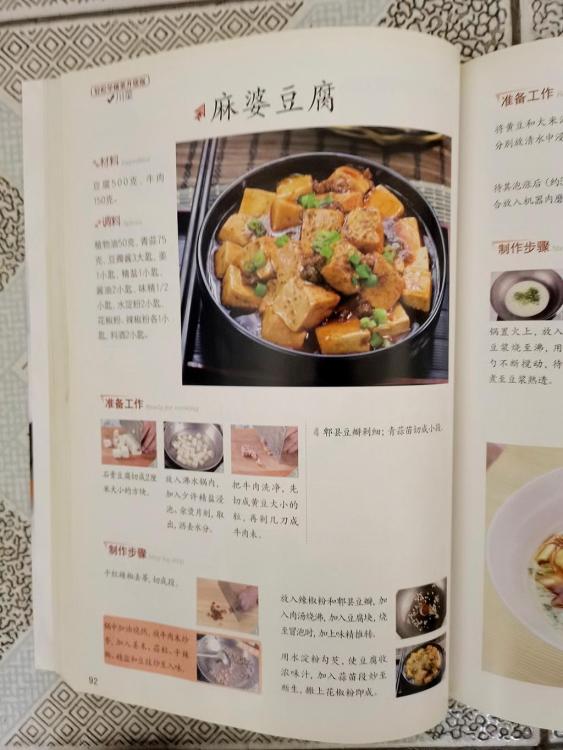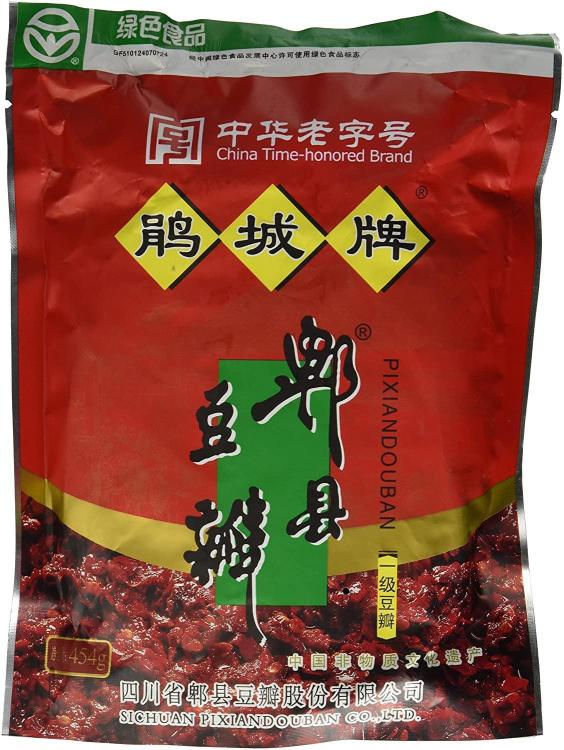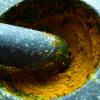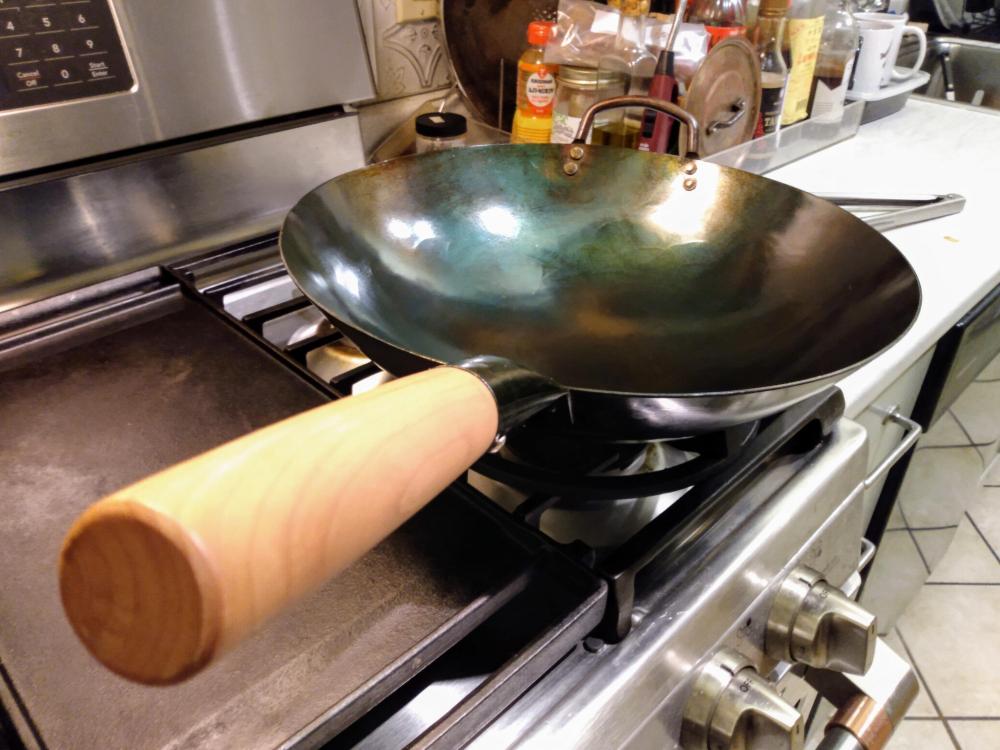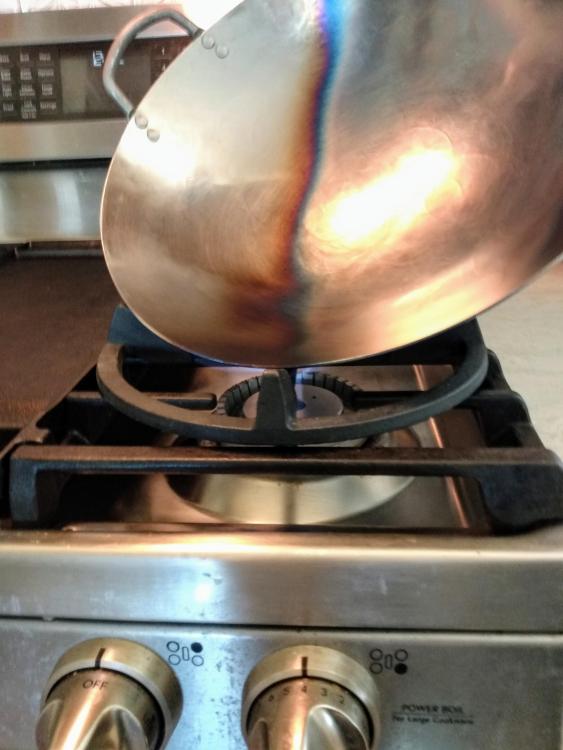Search the Community
Showing results for 'wok'.
Found 5,150 results
-
Seerious Eats this week has a digital Wok issue. Touts Kennji' s new book...BUT the essays/profiles of Grace Young (noted cookbook author) and Tane Chan (owner of the famous Wok Shop in San Francisco) are worth a read https://www.seriouseats.com/the-wok-digital-issue-5218092
-
Ma La Xiang Guo (Hot and Numbing Fragrant Pot, or Dry Hot Pot)
KennethT replied to a topic in China: Cooking & Baking
Does anyone know the reason why, in the examples above, hot oil is poured onto the dried spices rather than the spices being fried in the oil? I don't know if my question is clear. For some dishes using a lot of spices, the oil is heated in a pan/wok, aromatics (garlic/ginger/etc) stir fried and then the spices added and are stir fried until fragrant. But the examples above heat the oil and pour onto a pile of spices and let sit. Is there a reason for the 2 techniques or are they more of a matter of convenience? -
Hi Everyone, I've made my career as a scientist and researcher, but have dabbled in cooking as an amateur--even did a few taste studies when I was a faculty member at Cornell University school of hotel management. but Seven years ago, I decided to build up from scratch a small home cooking kitchen that would rely on induction and convection--and be ergonomic friendly. My induction units are from Vollrath, and I have two inexpensive Oster ovens--a toaster and a roaster. I have two separate sets of pans--one set are enameled cast iron, the other are stainless. I have selected them to carry out cooking at lower temperatures--around 250 degrees. I steam in several ways--mostly with an insert--and I often use my Staub crepe pan for a lots more than pancakes. If I can, I always try to consider new products and technologies. In eci, I have a Staub perfect pan as a home cook substitute for a wok, and Hestan nanobond for my 11" fry pan. If I could afford it, my next step for induction would be the control freak. In cutlery, I'm interested in fusion between Eastern and Western kitchen knives--especially involving newer processes. My most recent interest for cultural fusion is the Japanese deba (I've just reviewed the Kai Seki Magoroku Kinju on Chowhound), and my most interest for new processes are dual core knives. More than anything, my number one goal is to have fun! Ray
-
Many years ago I bought a cast iron comal in a Mexican grocery store in Pueblo, Colorado. It says "Hecho en México" on the back but I've never seen any cast iron sold in México, so I assume it was for export to the US. It lives permanently on my stove and I use it constantly. If I'm making salsa, I use it to toast the chiles, tomatoes or tomatillos, onion and garlic. Quesadillas, pancakes, grilled cheese sandwiches--it's a workhorse. It spans the central 2 burners, but when we replace the stove I'm looking for one with the oval burner so there won't be a cold spot in between the 2 burners. I don't use it to roast and peel poblanos--I do that directly on the gas burners, which is the only time I remove the comal. After many years of use it's completely non-stick. I also have a cast iron wok that makes wonderful fajitas. Takes a little time to warm up completely--this is characteristic of cast iron--but once it's hot it's better than any other pan for making crispy fajitas. Which reminds me that I haven't made fajitas in far too long.
-
I'm on a mission to find the best cookbooks, in English (I know it's a limiting factor), on regional Chinese cooking and techniques I have these so far: Land of Plenty - Fuchsia Dunlop (Sichuan) Land of Fish and Rice - Fuchsia Dunlop (Zhejiang) Revolutionary Chinese Cookbook - Fuchsia Dunlop (Hunan) Cooking South of the Clouds - Georgia Freedman (Yunnan) Xi'an Famous Foods - Jason Wang (Western China by way of NYC) All Under Heaven - Carolyn Phillips (All 35(?) regions and my favourite) Beyond the Great Wall - Naiomi Duguid and Jeffrey Alford (Tibet, Inner Mongolia, Western China, Yunnan, Guizhou) What are your thoughts on these additions? : Breath of a Wok/Stir Frying to the Sky's Edge/The Wisdom of the Chinese Kitchen - Grace Young The Food of Taiwan - Cathy Erway Phoenix Claws and Jade Trees - Kian Lam Kho Mooncakes and Milk Bread - Kristina Cho A Tradition of Soup: Flavours from China's Pearl River Delta - Teresa M. Chen Any recommendations for Fujian/Guangdong/Guangxi focused books? Hainan also seems to have a very unique cuisine... Thanks in advance
-
I too find the Woks of Life very hit and miss. I have never even seen Thai chillies here in Sichuan. That is a huge miss. For astart Mapo Tofu traditionally uses beef and not pork as they claim. And the chilis are all wrong. The brand of doubanjiang you found is fine. Pixian Doubanjiang has Protected Geographical Index rating in China and they do enforce it strictly. Fuchsia Dunlop's recipe is as good as it gets and very much identical to anything I've eaten in Sichuan. If it is still too bland for you add more of the ground chili. Below, for entertainment value only, is a photo of the mapo tofu recipe in one of my Chinese language cookbooks entitled, Everyday Family Sichuan Cooking. Not a Thai chili in sight. Don't worry about the colors shown in the finished dish - the photographs in that book are alll washed out! It's redder than it looks.
-
That doubanjiang looks like what I can get, and I use it - it's fine. I like some of the Woks of Life stuff, but others not so much. I find this a much better version of mapo tofu -
-
Mapo Tofu - The Woks of Life.pdf Woks of life called for the thai chillies for the Mapo Tofu recipe. I was looking for a tofu recipe with a little kick. I've only made home-style tofu. I found it to be rather bland. I found this on Amazon. It seems to be similar to the Pixian Doubanjiang recommended. Do you guys think this would be a good substitute in the woks of life recipe for Mapo Tofu? Or, is there another tofu recipe recommended that is not so bland?
-
Dawn is a detergent capable of cleaning crude oil off a duck ...say their ads. So its detergent powers are pretty strong. But no detergent is great with waxes, which is what seems to be on steel pans/woks.
-
I titled this post this way because I've never been to Sichuan, nor do I have a Sichuan cookbook, but I've read/seen enough on the internet from people in Sichuan and a lot of them seem to have most things in common... but whatever you call it, it's really tasty! I like to use mahi mahi but you can really use any firm fleshed not too oily of a fish. The quantities below are for 2 people, served with white rice. 12 oz fish, cut into 1/2" thick slices 1/2 and 1/2 rice flour and either cornstarch or potato starch fry oil - I typically use peanut oil but any high heat oil would work well 1 package mushrooms - I like a shimeji or maitake stir fry oil - I use rice bran oil, but any high temp neutral oil is good Aromatics: 2" ginger, peeled and cut 1/2 into sticks and 1/2 into small dice 4-5 cloves garlic, smashed and chopped 3 Sichuan pickled chillis about a small handful of dou chi (fermented black beans), chopped 1T Pixian doubanjiang 5 stalks celery, cut into 1/4" thick slices on bias 10 chinese chives (garlic chives) cut into 1" long pieces *you can also use some leeks - they would go in at the same time as the celery and chives 1-2T sichuan knifed chilli - I actually stopped using the knifed chilli since my wife finds it makes things a bit too spicy, so I leave the dried chillis whole: 3 dried heaven facing chillis 1-1/2t sichuan peppercorns, ground (you can use more, but I'm very sensitive to it so I don't use that much) 2 t light soy sauce 1/2 to 3/4C chicken stock 1-1/2t sugar (add more or less to taste when almost finished) 1/2t salt 1/2t MSG Method: Add about 3/4 to an inch of fry oil to the wok and put on medium high heat. It's hot enough to fry when a wood/bamboo chopstick bubbles when put in the oil While the oil is heating, dredge the fish slices in the flour mixture, shake off the excess, then fry until browned - maybe 30s to a minute? Remove and let drain on some paper towels Remove the fry oil and clean the wok Stir fry the mushrooms in about 1T stir fry oil until browned, remove from the wok and reserve Clean the wok if necessary (it shouldn't be) If not using the premade knifed chilli, add a couple tablespoons stir fry oil with the dried chilli and ground sichuan peppercorns and fry until fragrant and the peppers darken a bit Add the aromatics and stir fry until the red oil comes out If using the premade knifed chilli, add about 1-2T knifed chilli Add celery/chives/leeks and stir fry for a minute or so Sprinkle light soy sauce around the wok, stir around a bit then add chicken stock and seasoning, mix through, then add reserved mushrooms and fried fish Stir around for a few minutes until the liquid has reduced a bit and the flavors come together. Taste and adjust seasoning.
-
Just be willing to smoke up your kitchen. If you get your wok black and slick it will be good.
-
With a domed wok lid? I'd like an audio recording of that.
-
That product is all about sauce and coating so makes sense, Our local Panda had the high school kids there and tradesmen there in loads at lunch and that was the favorite. You could see them cooking - nice woks!
-
If I may; I had chipping too; I just lightly scrub with a non-soapy steel wool to remove the weakened bits and then re-oil and dry on the stove. The chipping went away after a few times and now I have a lovely black patina. I've been using this wok since 2009, and it just gets better each time. It also makes a MEAN batch of popcorn! -John
-
I had great results with flaxseed oil, on a carbon steel frying pan, not a wok, but found that the coating was brittle and would flake off in large chunks. A second treatment with bacon fat made it more resilient. YMMV
-
Why would you use flaxseed oil? Or need a particular brand of dish soap? my wok is completely none stick, eggs will slide right out of the wok without a moments hesitation, it’s cleaned with whatever dish soap I have (yes, I wash my wok dish soap doesn’t remove seasoning) and a plastic scrubber then wiped with vegetable oil. before cooking I wipe it out with a tea towel. there’s a lot of crap being bandied about how to season a wok but even one that is unseasoned that you use the proper cooking techniques with will have minimal sticking issues if any at all. I do see a lot of people who proclaim to know how to use a wok setting up all kinds of silly methods to test seasoning yet use a wok like a regular skillet. A wok is not a skillet, if you want to cook in a skillet use a skillet not a wok. Otherwise learn to use the wok properly and you’ll have one of the most fantastic cooking utensils in your kitchen.
-
I think something which may (or may not) be missed is that no matter how well seasoned your wok (or your carbon steel sauté pan, or your crepe pan) is, it still has to be heated correctly and "greased" correctly before you throw any food into it. Cause if it's not, it won't be nonstick, no matter what.
-
Seven hour blocks at 450F with just a veil of oil each. Nice. Now we have to cook something. I'm on page 41 of Grace Young's "Breath of a Wok". I feel the need to get a good handle on things before I do anything complicated. Thanks, all, for playing!
-
Fair enough. My fault for limiting the subset of "go-to wok seasoning agents" to youtube videos I've been canvassing for wok seasoning technique. Have to say this wok looks terrific, but lets see how it cooks our food. Pics soon...
-
I didn't say the techniques were or weren't effective. I did point out that what was claimed to be "the go-to wok seasoning agent" isn't so among the vast majority of wok users.
-
it does not follow logically that techniques used in China have any bearing on the effectiveness of flax seed oil in seasoning a wok. what follows is that techniques used in China are effective ( enough ) to get the job done.
-
I've never see anyone in China using flax seed oil to season a wok and they do have rather a lot of woks. In fact I've only seen flax oil once, about ten years ago, in a tiny bottle in a specialty FOOD store.
-
The internet is obsessed with Dawn detergent because it's a great product. Need your drain unblocked? Pour a half cup Dawn down there, wait 30 minutes, then pour boiling water in and, boom! All clear. Flax seed comes up a lot as the go-to wok seasoning agent. I'm on bake four at the moment and will keep seasoning until dinner, a total of eight hours. It's a medicinal oil so I won't be using it for cooking. I'm assuming this is a sealant.
-
Finally got around to seasoning this Bad Boy: The delay was a result of seeing so many different ways of getting the job done but there was always something that felt off about every one until I saw this gentleman, Jason, on YouTube: Many of his conditions met mine, like a Gas range/oven at home, and he's clearly done this before. From minute one he displays the result I want. As I watched this video, I recognized sections found in other season-a-wok videos. So you don't have to watch, here is his punch list: Scrub inside/outside with sponge scrub-side and Dawn detergent. I spent about 20mins doing it over and over +rinsing Unscrew handle and use straight-jaw, vice-grip pliers to hold wok at handle stub when starting the bluing Remove gas-burner diffuser lid so the flame jets straight out of the burner. I didn't have to go past 4 (out of 9) setting to roast the wok from edge to edge in 20mins When cooled (surprisingly fast, I'm used to cast-iron) apply very thin coat of flax seed oil on both sides. Wipe again to absorb any excess. Bake at 200F for 15 minutes Re-apply flax seed oil thinly; wipe again to absorb excess oil. Bake at 300F for 15 minutes Re-apply flax seed oil thinly; wipe again to absorb excess oil. Bake at highest setting (I'm doing 450F) for one hour - after one hour, turn off oven to let cool (~one hour) This is where you can wok up your ginger/scallion Good Luck fry, but Jason does it three more times so I'm-a goin' for it. The only smoke I saw/smelt was a small wisp from inside the hanle stub which I didn't wash. I'm on the first hour bake and already it is a satisfying translucent blue/black color, evenly hued from edge to edge. Success!
-
Yes, be safe. You might just find that your wok sits well enough into a ring to work. Probably bes to find one that's 18/8 or 18/10, i.e., nonmagnetic.




